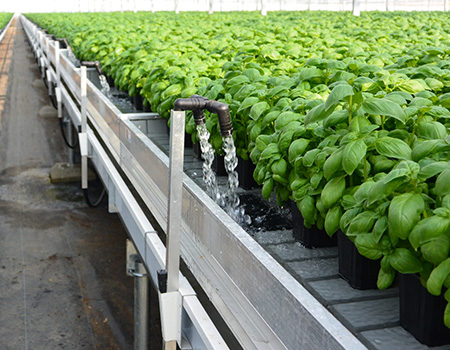Animal husbandry is a pillar industry in New Zealand, which has the highest average population of sheep and cattle in the world. After long-term development, New Zealand has formed a huge industrial economy around animal husbandry, with dairy and wool products world-renowned.
Plantation and fishery in New Zealand are also developed, mainly including wheat, barley, oats and fruits. It is the second largest kiwifruit producer in the world, and gold Kiwifruit has become its national treasure. New Zealand is a country with agriculture as its main industry, possessing abundant agricultural resources and advanced agricultural technology. In recent years, with the continuous progress of technology and people's pursuit of a healthy diet, hydroponic agriculture has gradually become one of the important directions for the development of agriculture in New Zealand.

Hydroponic agriculture is a new type of agricultural production method that uses water and nutrient solutions to cultivate plants, without the need for soil, and can be carried out indoors or outdoors. Compared to traditional land planting methods, hydroponic agriculture has higher yields and less water consumption, and is not limited by seasons and climate, enabling year-round production.
Vertical farm is a form of hydroponic agriculture that plants are planted on vertical shelves, greatly saving land area and enabling multi-level planting. Vertical farm can not only increase crop yield, but also reduce the occurrence of diseases and pests, and is more convenient for management and maintenance. Compared to traditional horizontal planting methods, vertical farm has the following advantages:

1. High spatial utilization: Vertical farm utilizes vertical space, overlaying planting layers, thereby significantly improving land utilization. Under the same land area, vertical farm can grow more crops, thereby increasing yield.
2. Saving water resources: Vertical farm adopts a water circulation system, which can recycle water and reduce water waste. Compared to traditional horizontal planting methods, vertical farm can save 70% of water resources.
3. Reduce the use of fertilizers and pesticides: Vertical farm adopts advanced ecological planting techniques, which can reduce the use of fertilizers and pesticides, thereby reducing environmental pollution.
4. No seasonal restrictions: Vertical farm adopts artificial light sources and temperature control technology, which can plant crops in any season, thus achieving year-round planting.
5. Improving quality: Vertical farm adopts advanced ecological planting technology and fine management technology, which can improve the quality and taste of crops.

The development of hydroponic farm not only drives the development of the agricultural industry, but also drives the development of animal husbandry and aquaculture. Due to the special nature of hydroponic agriculture, it can be carried out indoors or outdoors, thus it can be combined with animal husbandry and aquaculture. For example, planting some feed crops in vertical farm can provide sufficient food sources for raising animals; At the same time, in hydroponic agriculture, some herbs, vegetables, etc. can also be planted as feed or health products, providing more diversified products for animal husbandry and aquaculture.
In short, the development of hydroponic agriculture in New Zealand not only drives the development of the agricultural industry, but also provides more opportunities and choices for animal husbandry and aquaculture. In the future, with the continuous progress of technology and people's pursuit of a healthy diet, hydroponic agriculture will be more widely applied and promoted in New Zealand and even globally.




.jpg)



.jpg)

